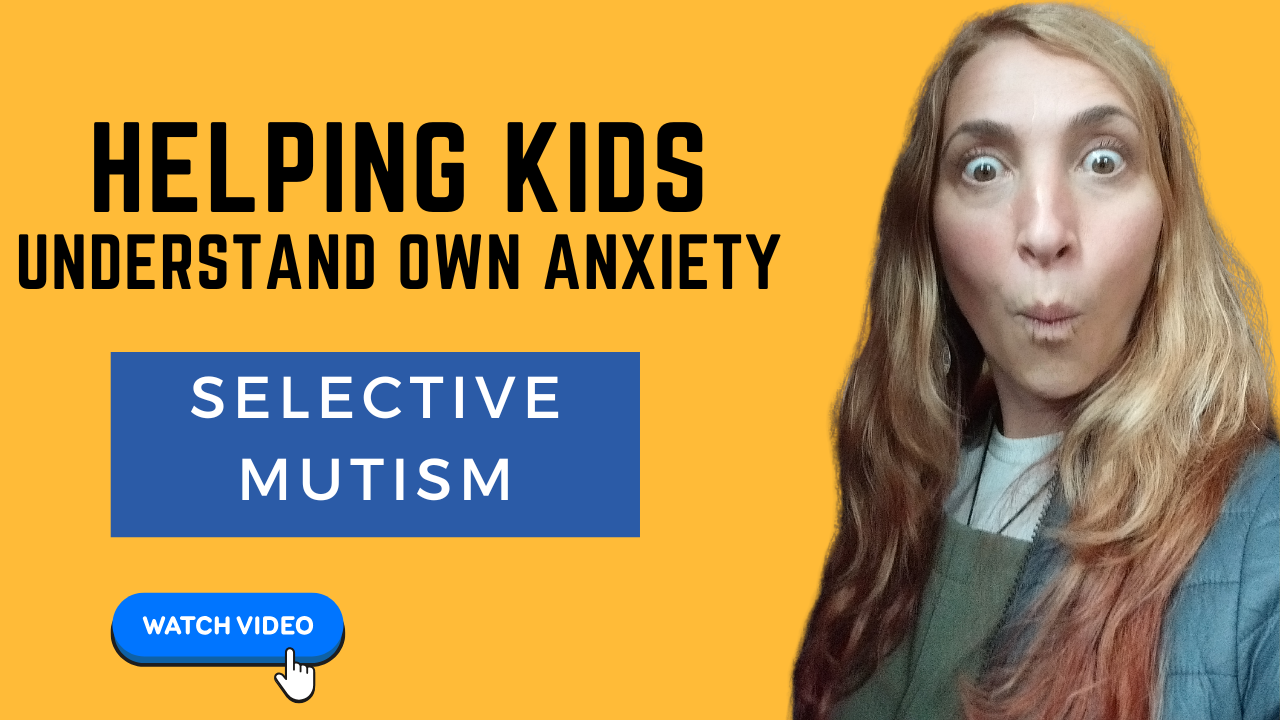Are you a parent of a child with Selective Mutism (SM) looking for ways to help them manage anxiety and feel more confident in social situations? Selective Mutism isn’t just shyness or a fear of speaking—it can affect every form of communication, from nodding to using gestures. In this post, we’ll cover practical, compassionate strategies that are both easy to implement and effective in helping your child feel at ease.
Understanding Selective Mutism: It’s more than just not speaking
Selective Mutism can feel overwhelming, both for the children experiencing it and for their families. This condition often involves much more than a reluctance to talk; children may struggle with any form of expression, including pointing or nodding. By understanding the full range of challenges that Selective Mutism presents, you can approach it with empathy and targeted strategies that address these unique needs.
- Have you noticed specific situations where your child finds it particularly hard to communicate?
Using fear scales: a simple tool for expressing anxiety levels
One practical way to help children with SM express their emotions is through a “fear scale.” A simple 0-3, 0-5, or 0-10 scale allows children to rate their anxiety in different situations visually. This tool gives them a way to communicate their feelings without words, making it easier to understand what scenarios make them anxious and track changes over time.
Tip Ask your child to rate their comfort level in a familiar situation and then compare it to a more challenging setting. This can open up valuable conversations about what specifically makes them anxious.
Sometimes, words are just too intimidating for children with Selective Mutism. Art, music, or physical movement can provide alternative ways to express themselves without pressure. For example, you might ask them to draw a picture of themselves feeling safe and happy or use music to express different emotions.
Personifying Fears: Making Anxiety More Manageable
One way to make fear less overwhelming is to give it a name. For instance, you and your child might come up with names for different levels of fear, such as “Mr. Tiny Bit Scary” for mild anxiety or “Mr. Feeling Good” for moments of confidence. This technique makes fear a little less personal and more like something external they can manage.
Try using these names in daily life. “Is Mr. Tiny Bit Scary here, or is it Mr. Feeling Good?” Over time, this can make it easier for your child to discuss their feelings.
Using Their Preferred Communication Method
Whether your child prefers to communicate through drawing, playing with toys, or using visual aids, adapt to their comfort zone. For children with SM, even something as simple as describing their words as “hiding” can be empowering, helping them understand that silence isn’t their fault.
Building a Supportive Environment at Home
A safe, understanding home environment can make a world of difference. As parents, we can offer empathy by acknowledging the child’s feelings and sharing similar experiences if possible. Normalize the experience of feeling anxious, and talk about it openly as a family.
Gradual Exposure: Gently Expanding Comfort Zones
Gradual exposure to social situations is a highly effective way to help children with SM gain confidence in speaking. Start with small, low-pressure environments and work up to more challenging scenarios. For example, they might begin by speaking to a familiar person at home before moving on to a small group of peers.
Question:
- Where does your child seem most comfortable? Could this setting be used to introduce gradual exposure to more social interactions?
Ready for more tips on gradual exposure and confidence building? Watch my video for step-by-step advice
Boosting overall confidence
Building general self-confidence can greatly impact your child’s ability to manage anxiety. Confidence-building activities, from small achievements to creative play, can improve their willingness to speak over time. Celebrate small victories, whether it’s a new activity they tried or a friendly wave at a peer.
Parental involvement: being consistent and patient
As a parent, using consistent language and strategies is essential. Staying patient, empathetic, and involved in the process can help create a reassuring environment where your child feels supported every step of the way.
Selective Mutism is a journey of learning and adapting. What works for one child may not work for another, so don’t hesitate to share strategies with other parents, seek advice, and adjust your approach as needed. Every small step is a win, and you’re not alone on this journey.
Final thought
Consider the unique strengths your child brings to the world. Embrace those as part of the journey, and remember that each child’s path to confidence is their own.
With the right tools and strategies, children with Selective Mutism can learn to manage their anxiety and develop stronger communication skills. Take it one step at a time, and remember that even small progress is meaningful.
Ready to help your child thrive with selective mutism? Join my course for practical, step-by-step guidance, or watch my video for insights on what you can start implementing today!
If you need more tailored support, contact me https://www.edinburgh-speech-therapy-wordsteps.co.uk/contact-me/
Anna Biavati
Speech and Language Therapist
Selective Mutism Specialist


